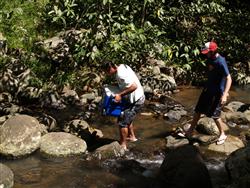
Study Adventure Tourism Online!
Enter the exciting fast growing world of Adventure Tourism!
This course is for anyone who wants to start their own Adventure Tourism business or plan/manage the provision of adventure tourism services as a career. The course considers the sources and types of opportunities available within this growing industry. Other topics include:
- outdoor adventure and management training
- the customer
- artificial environments
- geography
- sustainability
- and environmental impacts.
This course develops a capacity to plan and manage the provision of adventure tourism services.